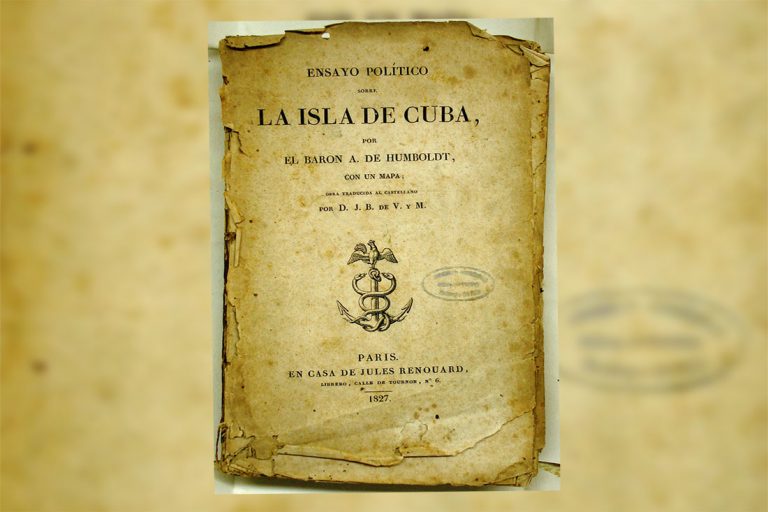The need to deepen and update the studies that had been done on the island, generated the publication of several texts not only focused in geography, but also in the social, population and economic factors, among other elements, of the different regions.
The foregoing therefore shows a concern for the knowledge of the region and its components. That is why perhaps, Humboldt and his “Political Essay of the Island of Cuba” (1807) can be considered as the first attempt to apply conceptions of regional history to our territory. In them, geographical, demographic, physical and economic factors are studied applying statistical methods, at a time when this approach was incipient worldwide.
Undoubtedly, the collection of information carried out by all jurisdictions allowed a different orientation to the way of describing the country and presenting its evolution over time, which would be encouraged by the attractiveness of local history; which at the same time paid tribute to the country.
The History Commission of the Economic Society of Friends of the Country
That is why, in the Royal Economic Society of Friends of the Country (SEAP, by its acronym in Spanish) since the search for progress in 1829, a commission would be chosen in order to write a general history of Cuba that would come to complete the encyclopedic vision that had just began through its recent statistical compilation and its cartographic representation. The objective attributed to this history was not a mere description of political events, sometimes inconsequential, but to establish a comparative state of the Island, its population, industry, commerce … with the rest of the evolution of the civilized world, which implied establishing links between geography, natural sciences and history. (Venegas, 2002, 89)
In the History Commission and also through the Memories, for this purpose, topographical, population and historical monographs were conceived, since a definitive work was never written.
In this way, different texts emerge that show the characteristics, particularities and similarities of the territories mentioned below: “Historical and geographical news of Sancti Spíritus” by Francisco Lavalée; “Historical, geographical and statistical memory of Cienfuegos and its jurisdiction” by Pedro Oliver y Bravo; “Geographical, topographic and statistical history of the town of Cienfuegos” by Alejo Helvecio Lanier; “History of Santiago de Cuba” by José M. Callejas; “El Bayamo” by José de Estrada; “History of Santa María del Rosario” Cayetano Núñez de Villavicencio; “Topographical description of the Isle of Pines” by José Labadía; “The city of San Carlos de Matanzas” by Esteban Pichardo; “Historical notes for the city of Nuevitas” by Nicolás de Cárdenas y Rodríguez; “History of Santa María de Puerto Príncipe” by Tomás Pío Betancourt; “History of Sancti Spíritus” by Tadeo M. Moles and “Memories about Bejucal” by Manuel Mariano Acosta.
In the case of Puerto Príncipe, although the date and therefore the request could not be verified, given that it does not appear in the materials reviewed and inquiries made, the collection of news from the land and the local archive was a task, mostly of the Patriotic Delegation; as it reflects the work of Tomás Pío Betancourt, one of our first historians.
Bibliography
Piñera, O. A., et al., (2009). Educación y Diputación Patriótica de Puerto Príncipe. Cuadernos de historia principeña 8. Patrimonio legado al siglo XXI. Camagüey: Editorial Ácana.
Pío Betancourt, Tomás (2017). Historia de Puerto Príncipe. Camagüey: Colección Esencias, Ediciones El Lugareño.
Torres Lasquetti, J. (1888). Colección de datos históricos, geográficos y estadísticos de Puerto Príncipe y su jurisdicción. La Habana: El Retiro.
Venegas Fornias, Carlos (2002). Cuba y sus pueblos, censos y mapas de los siglos XVIII y XIX. Centro de investigación y desarrollo de la cultura cubana Juan Marinello. La Habana.
Venegas Fornias, Carlos (2012). La Isla sobre el papel. URL: https://journals.openedition.org/terrabrasilis/428?gathStatIcon=true&lang=en
Other materials provided by Pedro Enrique Ramírez.
Translated by: Aileen Álvarez García






